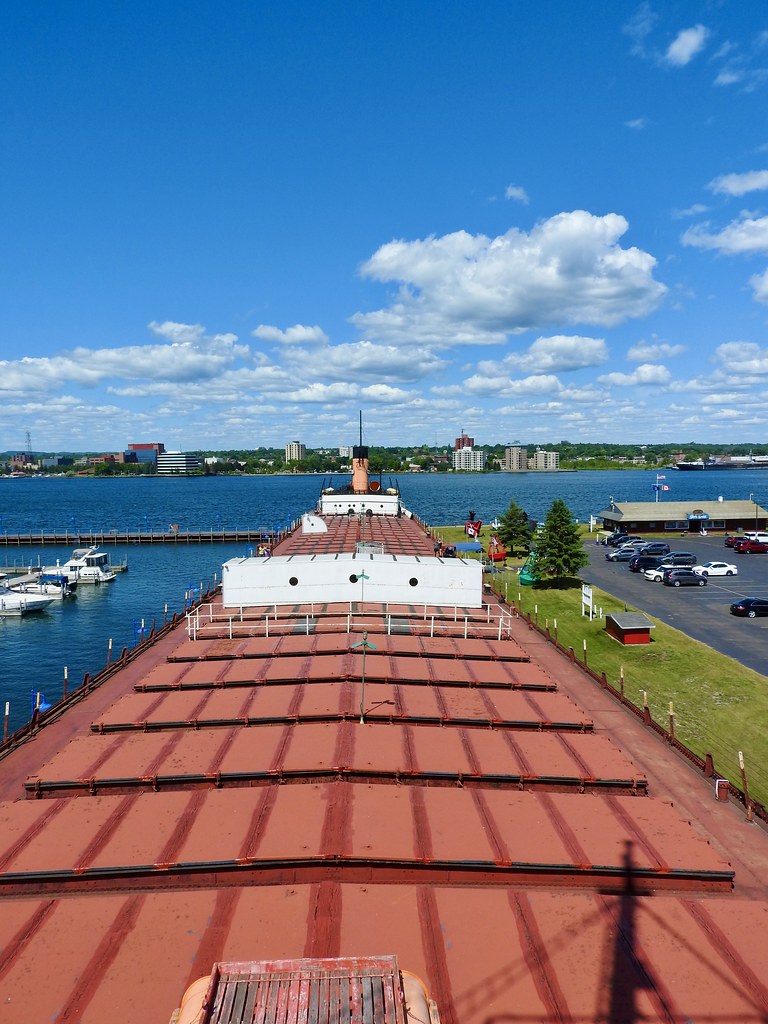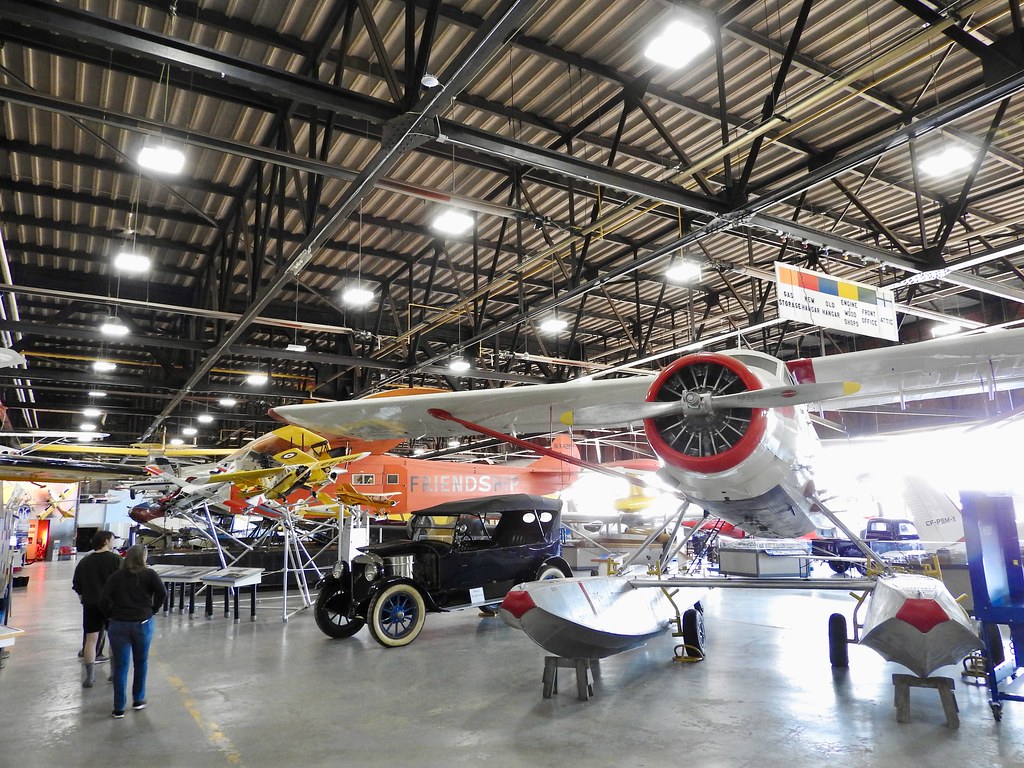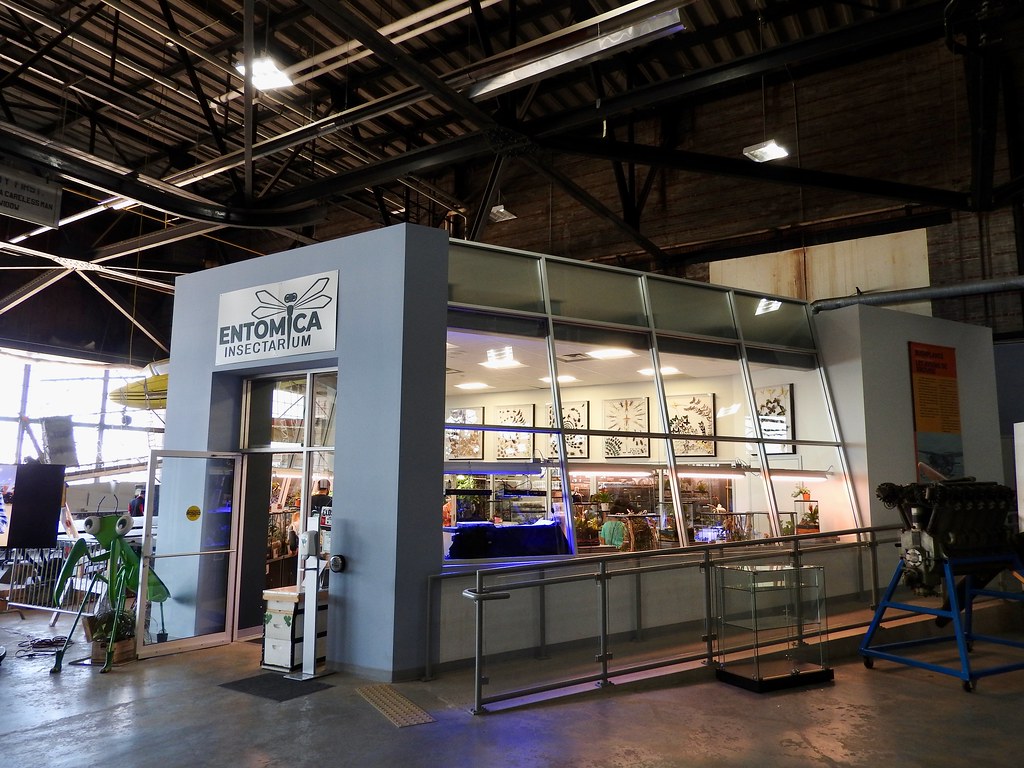Now safely ensconced in St. Ignace on Michigan’s Upper Peninsula, we could venture out on day-trips from our home base. One such journey brought us even farther up the U.P. to Sault Ste. Marie. This was my first visit to the town but not the first time it appeared in Twelve Mile Circle. I devoted an entire article on the etymology of Sault in 2014. It referenced a series of rapids in the Saint Marys River.
However, once again the amalgamation of several cultures led to an unusual pronunciation. The locals pronounced it “Soo” even though they spelled it Sault.
Downtown Sault Ste. Marie

So there we were on the banks of the river, the United States on one side and Canada on the other. Sault Ste. Marie — the one in Michigan — had about fifteen thousands residents and a small yet densely packed downtown. It also had a rich history, tracing back to the arrival of French missionaries in 1668, making it the oldest in the state.
But what accounted for the tourist hordes and the numerous businesses along Portage Avenue that catered to them? The town’s rich historical significance would have been enough for me but I’m unusual. There was definitely something else happening here that people wanted to experience.
Soo Locks

The river rapids were all that separated Lake Superior from Lake Huron and the rest of the Great Lakes. Thus a canal with locks seemed like a good idea in the 19th Century to tame the 21 foot drop (map). Improvements arrived over the years and large freighters can sail all the way to Duluth, some 2,300 miles (3,770 kilometres) from the Atlantic Ocean.
This spot is absolutely vital to commercial concerns in the United States and Canada. And for that, the U.S. Army Corps of Engineers operates, maintains and protects the locks in the interest of international security. Several thousand ships pass through here in any given year, carrying bulk materials like iron ore, coal, limestone, and wheat.
So, oddly enough, that’s why the tourists come here. The Corps built a multi-level viewing platform along the locks for people to watch freighters move through. We got to see the Thunder Bay of the Canada Steamship Lines as it made its passage. A lot of visitors will also hop onto excursion boats and ride through the locks on guided tours. Additionally there’s the downtown adjacent to the locks for shopping, dining and such, so people can make an entire day of it.
In one sense it’s all very impressive watching these massive ships at such close range. However, bear in mind that water fills a lock at about a foot per minute here and it needs to reach 21 feet. It’s not going to stimulate anyone with a short attention span. Bring some patience and appreciate the process. I say this as someone who actually enjoys this kind of stuff.
At least they spell it Soo.
Tower of History

Those early missionaries, Claude Dablon and Jacques Marquette, carried the banner of the Catholic church along with their French allegiance. In return, back in the 1960’s, the local Catholic parish decided to create a shrine recognizing that history. Apparently only the tower got built and then there were financial issues and further complications. Eventually the diocese donated the tower to an historical association because it probably never made sense for a church structure in the first place. Then it became a more broadly-defined Tower of History, attracting a wider audience than those simply interested in missionaries (map).
Anyway, now there’s this brutalist tower rising 210 feet (64 metres) over Sault Ste. Marie. I hate brutalism but I’m a sucker for towers, so we had to go up in spite of the perceived ugliness. It does have great views with several different observation decks, so I’ll give it that. In fact the photo at the top of this article shows one of the views. Look closely and you can see the freighter Thunder Bay still sitting in Soo Locks waiting to sail into Lake Superior. Just sitting there.
Museum Ship Valley Camp

We had one more stop in town once we left the tower, the Museum Ship Valley Camp (map). She used to be an active Great Lakes freighter carrying ore for nearly a half-century, from 1917 to 1966. Upon retirement she became a floating museum. Visitors can walk throughout the ship and onto the deck exploring nearly every corner. Individual cargo bays, which are actually quite large, hold museum exhibits. So it’s both a ship and a museum, kind of a two-for-one deal.
Crossing Into Canada
You didn’t think we’d go all the way up to the border and not cross into Canada, did you?
Everything went fine when we traveled to Niagara Falls a few months ago so we figured we’d go international again. This time it was even easier because COVID restrictions have largely been lifted at the border. So we drove to the end of Interstate 75 and across the Sault Ste. Marie International Bridge. It was a simple process with zero traffic, and the Canadians kindly let us enter with barely a delay.
Canadian Bushplane Heritage Centre

We actually had a specific destination in mind, the Canadian Bushplane Heritage Center located in Canada’s version of Sault Ste. Marie (map). It was actually less than a mile away from all the other attractions we visited during the day, but of course it involved an international border so that made it a little more complicated.
Why here? Quite simply, the younger kid loves airplanes so we visit lots of airplane museums. I did the same thing on the way to Niagara last October. We copied that idea and it was lovely, and everyone enjoyed the vintage aircraft, although perhaps one of us enjoyed it a lot more than the rest of us.
Entomica Insectarium

But this museum hid a strange twist because it also included an insect zoo called the Entomica Insectarium. Yes, right there amidst the old airplanes, and for a single admission price, a bonus attraction featured a room full of insects. I knew about this in advance of course because of my meticulous planning. However, the two subjects seemed so wildly divergent that I couldn’t imagine how this ever came to pass.
Well, my older kid is pursuing university degrees in entomology and zoology. So guess who was thrilled with the bug house portion of the day? We really geeked-out with insect discussions, and I think the staff enjoyed it too.
It gets even happier! The building next to the museum contained a brewery; Northern Superior Brewing. I’ll talk a bit more about my brewery visits in a later article, but note that I was thrilled to add another Canadian brewery to my list. The only thing that would have made our brief visit to Canada any better would have been a half-marathon for my wife. But she also likes breweries so everything was fine.
Airplane museum, bug house and brewery all in one spot? I call that the perfect Twelve Mile Circle family destination.
Articles in the Mackinac’s Orbit Series
- Up North
- Counting Fingers
- Sault Ste. Marie
- Petoskey
- Eastern U.P.
- Mackinaw City
- St. Ignace
- Town of Mackinac Island
- Lake Shore Road
- Into the Highlands
- What’s Brewing?
See Also: The Complete Photo Album on Flickr.

Leave a Reply